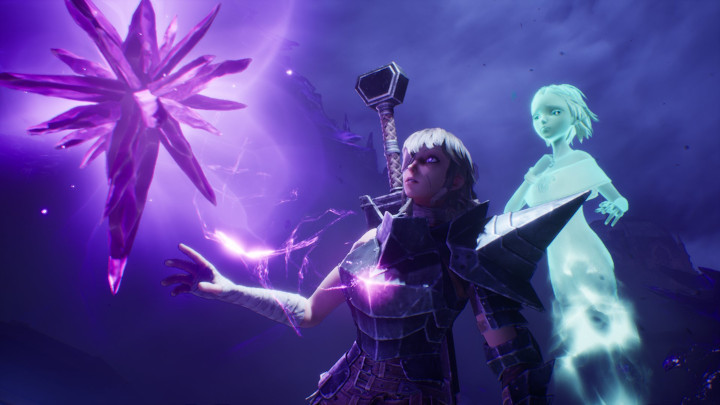
Soulstice was making its way around the Half-Glass Gaming offices even before it was released. My cohort Dave and I both attended an online preview event back in June, and afterward, I was allowed to play some of the game (it turns out, my demo included chunks of Act I, but not all of it). Later, Half-Glass Gaming’s Julian Watkins tested out a larger demo on his Steam Deck.
We’ve already been talking about this game internally for a long, long time, but now the game has finally been released into the wild. As I’m typing these words, I’ve just completed my first playthrough of Soulstice, and I have to say, it’s a lot. Like, a lot a lot. This is a game with some massive ambitions.
And I have to admit, it does an admirable job of living up to some of its soaring expectations. At the same time, it stumbles a few times in ways that I think are going to have a meaningful impact on most people’s experiences with the game, so they’re worth talking about.
My thoughts on Soulstice are kind of all over the place, which is appropriate considering the game itself is kind of all over the place. I’m going to try to organize my thoughts as best I can, but I’ve got a lot to say about this game.
What is Soulstice?
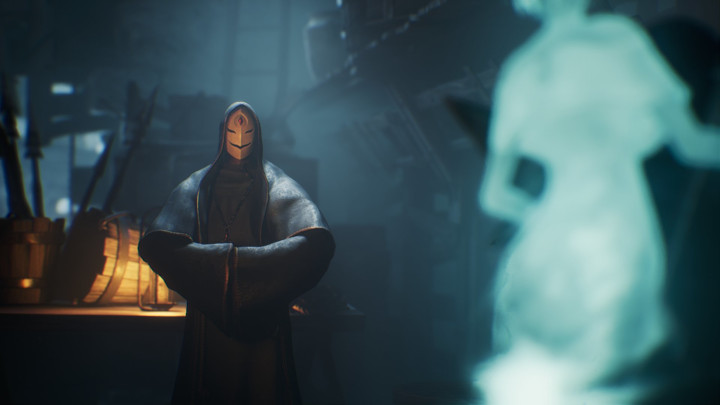
First up, let me explain what this is. Soulstice is a hack-‘n-slash that, gameplay-wise, would have felt at home on the PS2. I can imagine it sitting on a shelf next to something like God of War 2 or Devil May Cry. Visually, though, it takes cues from Dark Souls — like, huge, super-obvious cues — though its characters are kind of cartoony in a way that brings to mind the Clone Wars CG animated series.
So that’s basically the elevator pitch for Soulstice. So let’s talk about what I liked and didn’t like…
I love how rich the lore of Soulstice is.
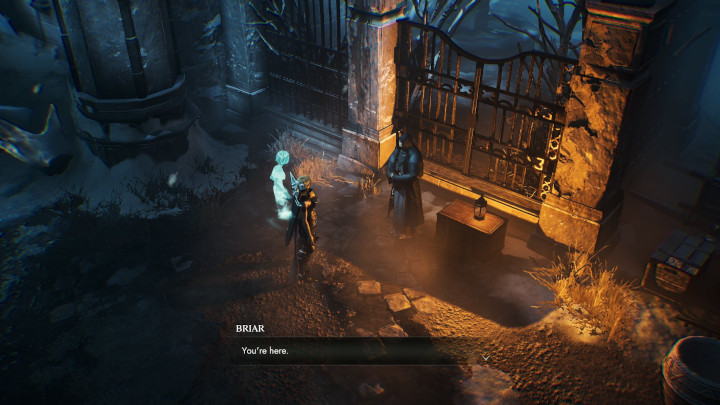
Soulstice has a really well-realized world. There’s so much going on in this game world that it can sometimes feel a little overwhelming. Thankfully, you’ve got a wiki in the Extras menu in the form of the Codex, which provides paragraphs of lore to keep you oriented. As you progress through the game, you’ll unlock new entries, and as you kill more enemies, you will often unlock further paragraphs of description in entries you’ve already unlocked.
That might sound a little messy, but the game actually handles all of this really well. Plus, it gives you all this in Futura font, which might very well be the cleanest font that’s ever existed. All of the menus look super-slick, and even the blocks of text feel stylish.

The main characters are the sisters Briar and Lute, who together make up a Chimera — essentially, Briar has a crystal embedded in her chest which grants her superhuman powers and also keeps her synched with her “Shade” Lute (who is dead). This crystal is kind of like Tony Stark’s arc reactor, but only if, say, Pepper Potts was sacrificed so that her soul would perpetually possess it. Kind of…
The sisters were put into this symbiotic situation by a man named Lord Dugal, and they became part of the Order of the Ashen Knights, whose true intentions are always kept a little bit muddy.
But whereas a game like Dark Souls would show an extreme amount of restraint in handing you scraps of information here and there, Soulstice leans into its lore really hard, which can often lead to overlong explanations of things within the game world. That can slow down the pace of the game considerably, extending the overall runtime to an almost ludicrous degree. I think you could probably have told this story in about 15 hours, but my first playthrough of the game took me somewhere around 50 (admittedly, I did spend a bit of time grinding to see how many upgrades I could purchase).
You can just skip cutscenes and dialogue if you want to, but I suggest you don’t; the story here is such a massive part of the game that it would be a shame to miss out on it.
I don’t know how to feel about Briar.
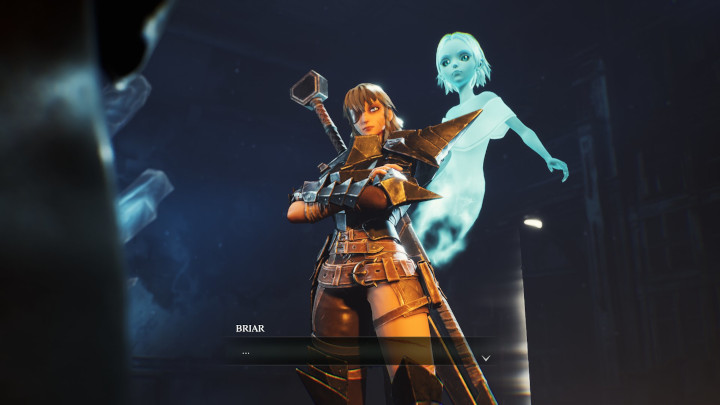
Briar is distant and closed-off for most of the game, which makes her hard to read. You’ll spend certain sections of the game exploring her memories as Lute, but I don’t think these scenes hit as hard as they would if Briar was a better-realized character. In fact, I would compare Briar to Lightning from Final Fantasy XIII, in that her personality is minimized to allow the player to project onto her.
I feel like Lute has a much richer — and more heartbreaking — character arc, and that exploring Briar’s memories ends up being a way to understand Lute’s story better. I think that dynamic works here for the story the game is trying to tell.
And I would argue that Layton, the masked figure who sort of guides (manipulates?) you throughout the journey, has the most interesting story in the game, and he’s always presented as this ever-unraveling enigma. I didn’t like him initially, as he can come off as pretentious and cruel, but once you get to know him better, he really becomes the shining star of Soulstice.
And even Donovan, a side character who shows up here and there, feels like he has a more fleshed-out story than Briar does.
The gameplay feels good, though, right?
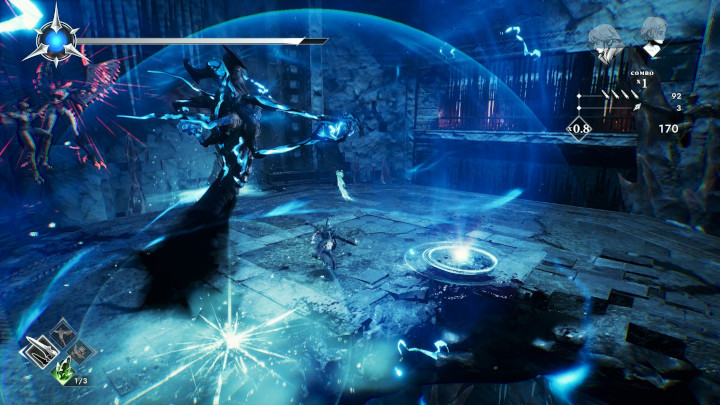
The hack-n’-slash gameplay feels tight and precise, and there’s a lot of complexity to it. I think part of stretching the game out so long was that it gave the game mechanics some much-needed breathing room.
As you progress through the game, you’ll unlock more and more weapons. Note that all of these weapons are accessible at all times — you’ll swap between them all using the D-pad, sometimes in the middle of combos. Weapons have their own strengths and weaknesses, making certain weapons good against certain enemies. Part of the learning curve of the game’s combat system is experimenting with different weapons on different enemy types.
You also have two different forcefields (called the Evocation Field and the Banishment Field) that Lute activates when you hold down one of the triggers on the controller. One of these is red (Banishment); the other is blue (Evocation). Certain enemies must be inside the red one in order to be harmed, while others must be inside the blue one. And some enemies — called the Possessed — must be killed while in the red field, then wraiths pop out of them, which must be killed inside the blue field. If you don’t kill the wraiths fast enough, the Possessed enemy revives.
So you’re constantly swapping between the red and blue fields, while managing the gauge. As a field is active, the gauge fills, and if you leave it active for too long, it bursts, stunning Lute and rendering your fields unusable for a few seconds.
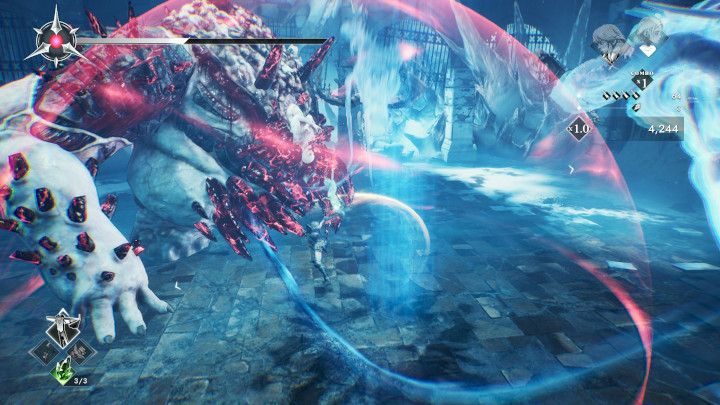
Now, all of this is introduced slowly enough that it doesn’t feel overwhelming (at least in my opinion), but as you get deeper into the game, the swarms of fodder kind of diminish and most of what you fight will be these drawn-out, gimmicky fights against enemies with a lot of mechanics to understand. The game shifts its balance toward those types of enemies, when I feel like it should always err on the side of massive swarms of super-weak enemies. It’s just so much more satisfying to plow through a battlefield with 50 enemies on it than it is to spend several minutes fighting a single enemy — a single enemy you’ve already fought a dozen times before, I should add.
If I could change anything about Soulstice in terms of combat, it would be to space out the more complex fights better and keep throwing mindless mobs of trash at the player to keep them occupied in between the longer fights. As is, the game starts feeling tedious in the second half due to how much focus every single fight demands from you. I would prefer stretches that let you zone out and mindlessly hack through mega-wimps for a while before tackling your next big challenge.
The chapter-select system is excellent.
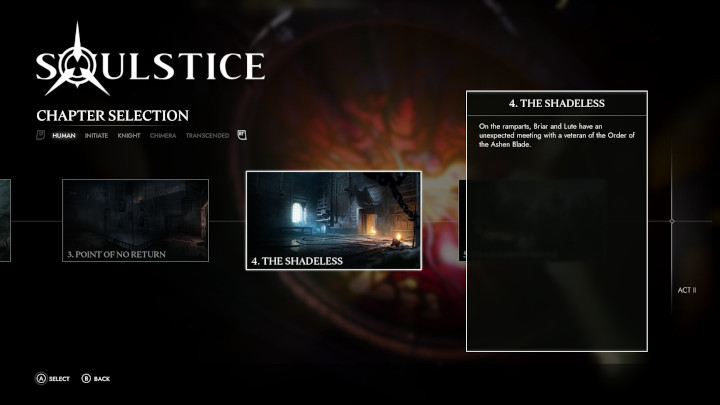
I did a whole article on this, so I’ll just be brief here, but I think Soulstice‘s chapter-selection system is phenomenal. It allows you to replay any chapter that you’ve already completed on any difficulty level you’ve already completed it on. So if you hit a brick wall in terms of difficulty, you can go back to a previous level and grind for a while. Or you can turn down the difficulty level, clear the level, then go back and replay it on a higher difficulty level when you’re a bit more powerful.
There’s another benefit to this system: If you play through half the game, then put it down for several months, you can come back to it and start the story over from the beginning while keeping all of your progress in terms of skills and weapons. I absolutely love systems like this, because I tend to enjoy replaying games for the stories but I hate to do that if it means resetting character progress. This system gives you the best of both worlds, and I wish more games would create these sorts of options.
We have to talk about the camera.
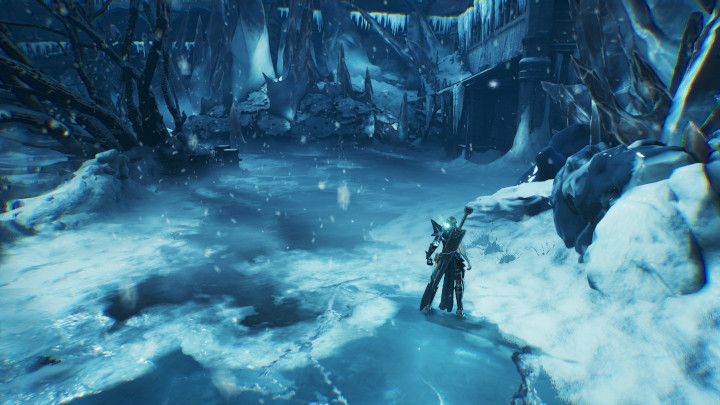
Part of what makes Soulstice feel like a PS2-era hack-‘n-slash rather than a modern one is the camera system. While you can move it a little bit during exploration phases — and pretty freely during combat — the game very much has specific camera angles that it will force on you.
I don’t think this is enough to put off players, but it does create some problems. For instance, the game’s interior locations can be labyrinthine, and the ever-shifting camera angles can make it really difficult to conceptualize the floorplans in your head. This can lead to players feeling lost more than they should.
There’s one part of the game, though, where this camera system completely breaks down. One chapter features a timer (Chapter 21: Chase the Storm), and you must complete the chapter before the timer expires. The very last section of this chapter features some 3D platforming, and the camera angle obscures the height of many of the platforms. This leads to you misjudging the jump and falling down to a previous section of the stage, meaning you have to burn 30 precious seconds to get back to the platforms so you can try again. To really, really make this awful, there are no checkpoints in this stage. So if you fail the stage because of this platforming section, you have to start the whole thing over again.
There are some texture issues on Xbox Series S.
My demo build of Soulstice was on PC, but I played the review build on Xbox Series S. And there are some clear differences in terms of rendering power. In some sections of the game, textures failed to load in, obscuring the game’s lovingly detailed world with muddy-looking flat surfaces.
This problem was generally the worst in the game’s exterior snowy areas. Interior locations looked sharp and crisp throughout my entire playthrough.
I can’t say if this is an issue on PS5 or even on Xbox Series X, and my PC demo didn’t feature any of the really problematic areas, so I can’t make a comparison (the areas I was able to compare, though, do look better in the PC version, which isn’t really surprising). But on Xbox Series S, the texture issue was pretty obvious in a few key places.
So how about that ending?
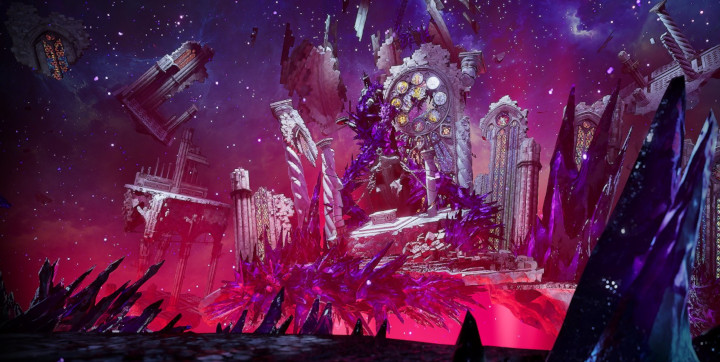
So, I’ve already talked a bit about the ending of Soulstice elsewhere, and I’m going to try to keep this as spoiler-free as possible. But I think it is important to note that Soulstice ends on a cliffhanger, clearly setting up more story content down the road. Whether that takes place in future DLC or full-on sequels is anybody’s guess, but my own personal assumption is that this was designed to be a trilogy.
Conclusion

Soulstice is a game that tries to cram an insane amount of content into its hack-‘n-slash formula. When it works, it works really well, but sometimes the tension between its complex parts can slow down the flow of the game overall.
But despite its imperfections, there’s an allure to the game that keeps me coming back. When I feel completely exasperated by some of the longer combat sections, I generally put the game down for a bit, and within a few hours I feel pulled back to it to try again. Soulstice‘s flaws might diminish the experience, but they don’t ever completely ruin it.
I am curious to see if this is the launching point for a whole series, because there’s clearly some room for improvement and a whole lot more story to tell.
Disclaimer: I was given a review code for Soulstice on Xbox Series S, but the opinions expressed in this article are my own.